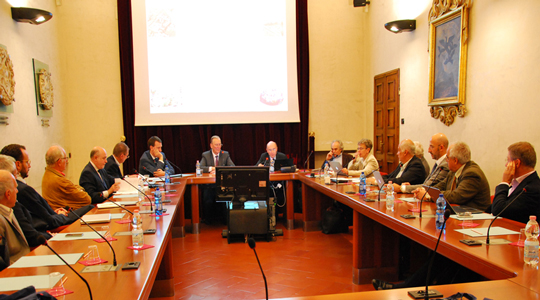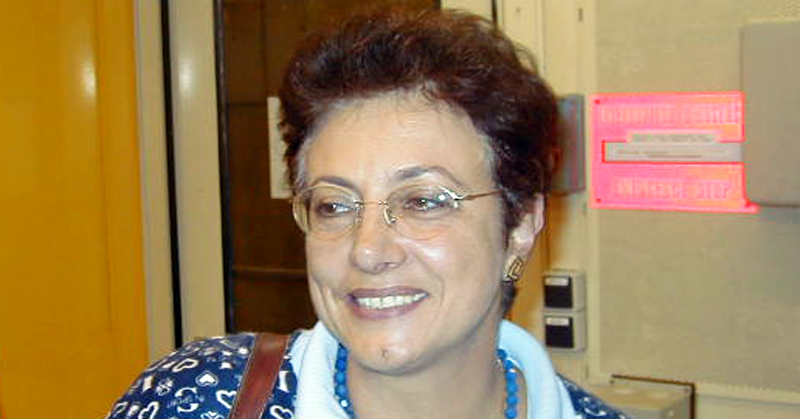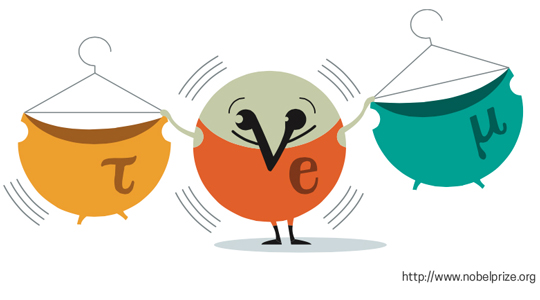INFN AT THE MAKER FAIRE ROME 2015 WITH HOMEMADE DETECTORS

As from this year, the INFN has joined the list of partners for the Maker Faire, the important exhibition for new digital artisans. The Italy 2015 edition was hosted by the Sapienza University in Rome. Makers from the INFN showed the public how to build a homemade particle detector, using simple ingredients. The instruments presented at the event, a cosmic ray detector and accelerated particle beam scanner, were built using "ArduSiPM" Arduino Shield software and board, developed for research purposes by the INFN's Rome division. With the addition of a few electronic components, it was possible to build a particle detector data acquisition and control system, creating a small-scale replica of the large physics experiments built by the INFN. The homemade detector is very similar to the larger versions used for instance in the LHC accelerator at CERN, but its very low production costs mean it has numerous applications in education. As well as presenting the work of its makers, the INFN also took part in the Maker Faire Rome 2015 with a contribution to the exhibition called "La Scienza illumina" (Science illuminates), the aim of which was to raise awareness among people of all ages about sustainability and energy saving. The exhibition was designed and realized by the Sapienza University in Rome.




 The INFN and JINR (Joint Institute for Nuclear Research) based in Dubna held a bilateral meeting on 12 and 13 October at the Rector's office of the University of Pisa to discuss their respective research activities and explore potential areas of common interest with a view to expanding their collaboration. Russia and Italy have a long history of scientific collaboration. Physicists at the INFN and JINR are currently working together on several projects, specifically the Borexino, SOX, DarkSide and GERDA experiments at the Gran Sasso National Laboratory (LNGS), the JUNO project in China and the mu2e and CDF (Collider Detector at Fermilab) experiments at Fermilab in Chicago. During their two-day annual meeting, the INFN and JINR also attended a series of conferences on history and science focused on the legacy of Bruno Pontecorvo, one of the "Via Panisperna Boys", who carried out some of his research into neutrinos in Dubna. In 1957 this Pisa-born physicist had the brilliant idea that neutrinos might oscillate and, just a few days prior to the bilateral meeting, the 2015 Nobel Prize in Physics was awarded to the physicists who experimentally demonstrated of such a phenomenon.
The INFN and JINR (Joint Institute for Nuclear Research) based in Dubna held a bilateral meeting on 12 and 13 October at the Rector's office of the University of Pisa to discuss their respective research activities and explore potential areas of common interest with a view to expanding their collaboration. Russia and Italy have a long history of scientific collaboration. Physicists at the INFN and JINR are currently working together on several projects, specifically the Borexino, SOX, DarkSide and GERDA experiments at the Gran Sasso National Laboratory (LNGS), the JUNO project in China and the mu2e and CDF (Collider Detector at Fermilab) experiments at Fermilab in Chicago. During their two-day annual meeting, the INFN and JINR also attended a series of conferences on history and science focused on the legacy of Bruno Pontecorvo, one of the "Via Panisperna Boys", who carried out some of his research into neutrinos in Dubna. In 1957 this Pisa-born physicist had the brilliant idea that neutrinos might oscillate and, just a few days prior to the bilateral meeting, the 2015 Nobel Prize in Physics was awarded to the physicists who experimentally demonstrated of such a phenomenon. The construction of the Large Size Telescope (LST) prototype, one of the hyper-technological eyes of the Cherenkov Telescope Array (CTA) North, has officially started. Takaaki Kajita, who was recently awarded the Nobel Prize in Physics, attended the opening ceremony on 9 October, on the island of La Palma (Canary Islands). The CTA-North is one of the two structures that will make up the biggest gamma ray observatory ever built. The CTA-North will be built at the Roque de los Muchachos Observatory of the Instituto de Astrofisica de Canarias (IAC) at an altitude of 2,200 metres above sea level, on the island of La Palma in the Spanish Canary Islands. The European Southern Observatory (ESO) in Paranal, Chile has been chosen as the site for constructing the CTA-South, in the southern hemisphere. The project involves the construction of over 100 new-generation telescopes to study high and very high-energy photons from galactic and extra-galactic sources. Italy is involved in the CTA project through the Italian Institute for Astrophysics (INAF), the INFN and a consortium of universities led by the University of Padua.
The construction of the Large Size Telescope (LST) prototype, one of the hyper-technological eyes of the Cherenkov Telescope Array (CTA) North, has officially started. Takaaki Kajita, who was recently awarded the Nobel Prize in Physics, attended the opening ceremony on 9 October, on the island of La Palma (Canary Islands). The CTA-North is one of the two structures that will make up the biggest gamma ray observatory ever built. The CTA-North will be built at the Roque de los Muchachos Observatory of the Instituto de Astrofisica de Canarias (IAC) at an altitude of 2,200 metres above sea level, on the island of La Palma in the Spanish Canary Islands. The European Southern Observatory (ESO) in Paranal, Chile has been chosen as the site for constructing the CTA-South, in the southern hemisphere. The project involves the construction of over 100 new-generation telescopes to study high and very high-energy photons from galactic and extra-galactic sources. Italy is involved in the CTA project through the Italian Institute for Astrophysics (INAF), the INFN and a consortium of universities led by the University of Padua. Il fisico triestino, Silvia Dalla Torre, che dirige la sezione di Trieste dell'Istituto Nazionale di Fisica Nucleare (INFN), è stata selezionata per coordinare la più ampia collaborazione scientifica internazionale dedicata allo sviluppo di rivelatori per particelle ionizzanti. Si tratta di sofisticati occhi tecnologici, in grado di sondare nelle pieghe più intime della materia. A partire dal gennaio 2016 la scienziata italiana, insieme al collega del CERN di Ginevra Leszek Rolelewsly, guiderà una comunità di circa 500 scienziati, RD51, provenienti da 75 università e laboratori di ricerca di 25 Paesi in Europa, America, Asia e Africa. Il fisico triestino svolge attività di ricerca, sia in Italia che all'estero, nel campo della fisica subnucleare, ed è autrice di più di 170 articoli su riviste scientifiche internazionali.
Il fisico triestino, Silvia Dalla Torre, che dirige la sezione di Trieste dell'Istituto Nazionale di Fisica Nucleare (INFN), è stata selezionata per coordinare la più ampia collaborazione scientifica internazionale dedicata allo sviluppo di rivelatori per particelle ionizzanti. Si tratta di sofisticati occhi tecnologici, in grado di sondare nelle pieghe più intime della materia. A partire dal gennaio 2016 la scienziata italiana, insieme al collega del CERN di Ginevra Leszek Rolelewsly, guiderà una comunità di circa 500 scienziati, RD51, provenienti da 75 università e laboratori di ricerca di 25 Paesi in Europa, America, Asia e Africa. Il fisico triestino svolge attività di ricerca, sia in Italia che all'estero, nel campo della fisica subnucleare, ed è autrice di più di 170 articoli su riviste scientifiche internazionali. The 2015 Nobel Prize in Physics has been awarded to Takaaki Kajita from Japan and Arthur B. McDonald from Canada, for their key contributions to the SuperKamiokande experiment in Japan and Sudbury Neutrino
Observatory (SNO) in Canada, which demonstrated that neutrinos oscillate. Neutrinos are in fact chameleon- like particles, switching between three different types that physicists call "flavours": electron, muon and tau neutrinos. Contrary to that predicted by the Standard Model, this metamorphosis requires that neutrinos have mass. The discovery has changed our understanding of the innermost workings of matter.
The neutrino Nobel Prize is another extraordinary achievement in the field of particle physics after the discovery of the Higgs boson, which received the Nobel Prize in 2013, and is one of the most promising keys to unlocking the mysteries of the Universe. A particle, the neutrino, that speaks good Italian. Starting from its name, jokingly coined by Enrico Fermi to distinguish it from the neutron which also has no electric charge, but a much greater mass. Then there was Bruno Pontecorvo who first hypothesized that neutrinos might oscillate also suggesting how to observe them in an experiment with nuclear reactors. And then the INFN's Gran Sasso National Laboratory, where the MACRO, Gallex/GNO, BOREXINO and OPERA experiments are helping to shed light on all the various aspects of such oscillations. The INFN Gran Sasso National Laboratories are currently working to solve the dilemma of the nature of this particle, as suggested by Ettore Majorana.
The 2015 Nobel Prize in Physics has been awarded to Takaaki Kajita from Japan and Arthur B. McDonald from Canada, for their key contributions to the SuperKamiokande experiment in Japan and Sudbury Neutrino
Observatory (SNO) in Canada, which demonstrated that neutrinos oscillate. Neutrinos are in fact chameleon- like particles, switching between three different types that physicists call "flavours": electron, muon and tau neutrinos. Contrary to that predicted by the Standard Model, this metamorphosis requires that neutrinos have mass. The discovery has changed our understanding of the innermost workings of matter.
The neutrino Nobel Prize is another extraordinary achievement in the field of particle physics after the discovery of the Higgs boson, which received the Nobel Prize in 2013, and is one of the most promising keys to unlocking the mysteries of the Universe. A particle, the neutrino, that speaks good Italian. Starting from its name, jokingly coined by Enrico Fermi to distinguish it from the neutron which also has no electric charge, but a much greater mass. Then there was Bruno Pontecorvo who first hypothesized that neutrinos might oscillate also suggesting how to observe them in an experiment with nuclear reactors. And then the INFN's Gran Sasso National Laboratory, where the MACRO, Gallex/GNO, BOREXINO and OPERA experiments are helping to shed light on all the various aspects of such oscillations. The INFN Gran Sasso National Laboratories are currently working to solve the dilemma of the nature of this particle, as suggested by Ettore Majorana.

